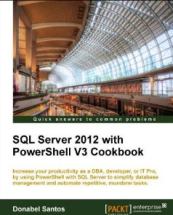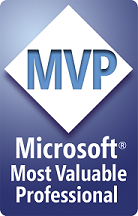This is my SQLPASS :
Sessions
Day 0 – Pre-Conference
- Building a Microsoft Data Warehousing Platform by Brian Knight – excellent introduction to data cleansing, warehousing, and even data mining!
Day 1
- Keynote
- Spotlight: SSRS in the Enterprise – How to Survive with a Smile (Wayne Snyder)
- To Partition or Not To Partition – The Questions … and the answers (Don Vilen)
- SQL Server Execution Plans from Compilation to Caching to Reuse (Maciej Pilecki)
- Designing and Building Private SQL Server Clouds
Day 2
- Quest Software Breakfast Presentation about DMVs (Kevin Kline – @kekline, Brent Ozar – @brento, Tim Ford @sqlagentman, Buck Woody @buckwoody, Louis Davidson @drsql) – Wish there was another Quest breakfast for tomorrow
- Keynote
- Applied SSIS Design Patterns (Andy Leonard @AndyLeonard)
- DRP101: Learn the Difference Between Your Log and Your Cluster (Brent Ozar @brento)
- Women in Technology Luncheon sponsored by CA
- Adding SSRS Report Bells and Whistles (Jessica Moss @jessicamoss)
- Security and Deployment with Reporting Services 2008 R2 (Lukasz Pawlowski)
Day 3
- Keynote
- and highlight of the week: got invited to the bloggers table! Thanks Grant (Grant Fritchey – @GFritchey) and Brent (Brent Ozar – @brento)
- said hi to Peter de Betta (@debettap)
- Advanced Techniques for SSIS Package Development (David Noor)
- Super Reports:Patterns and Recipes (Paul Turley) — and at the same time watching hilarious tweets from the @buckwoody comedy hour .. err session
- SQLCAT: SharePoint on SQL Server – Implementation, Configuration and Tuning (Burzin Patel) — and still watching back and forth hilarious tweets from the @buckwoody comedy hour .. err session
- Storage for the DBA (Denny Cherry @mrdenny)
Last Day – Post-Conference
- with Itzik Ben-Gan on Query Tuning and Indexing for SQL Server 2005 and 2008 (Grant did warn that “bleeding in the ears” is normal, and I have to say, he wasn’t kidding!)
There are many sessions I would have wanted to attend, but they all happened at the same time. Which justifies why Im getting the DVD  And – all of the presentations have been great!
And – all of the presentations have been great!
Inspiration
Additional highlights of my first SQLPASS:
- I mentioned it already, but again worth mentioning – highlight of the week: got invited to the bloggers table! Thanks Grant (Grant Fritchey – @GFritchey) and Brent (Brent Ozar – @brento)
- Kevin Kline (@kekline) remembering my name!
 (his first recollection was “ninja.. you’re with the ninjas…”
(his first recollection was “ninja.. you’re with the ninjas…” - Quest Software Breakfast Presentation was great
- Women in Technology Luncheon was (is) very inspiring
SQLPASS Twitter Connection
And, even if this is the first SQLPASS I attended, I think it has been one of the coolest so far (based on remarks I heard). Bloggers and “tweeps” have made their mark in this conference. And some of “tweeps” I have met so far… (the pleasure and privilege is mine!) ~ I’m @sqlbelle
- @brento
- @kekline
- @GFritchey
- @brianknight
- @AndyLeonard
- @wendy_dance
- @sqlfool
- @pinaldave
- @joewebb
- @bknight
- @peshkaj
- @stuarta
- @lotsahelp
- @sqldba
- @paschott
- @mike_walsh
- @DamonRipper
- @SQLDBA_Dude
- @SQLSocialite
- @GlennAlanBerry
- @llangit
- @SQLServerMag
It is very inspiring to meet a lot of these people. If you meet them, you’ll know right away how passionate they are about their craft, about learning, about their dedication to share their knowledge and help others. It is very humbling.
Swags
And .. thanks to the vendors for the swags 
- Quest – for the free signed Database Benchmarking book (thanks Kevin Kline!) – plus the twitter shirt!
- Red Gate for the free books on Exceptional DBA and DBA Tacklebox
- Idera – I got to spin twice .. got a $1 and a cup holder. But it was good to see our buddy David Terry!
Lessons Learned
Aaron Bertrand mentioned in his post Another PASS has come and gone – “If you didn’t make it to PASS this year, I feel bad for you.” ~ in some ways I do too.
We have our own reasons for not being able to attend conferences such as SQLPASS, but after attending my first PASS, I realize now how much I have been missing. I feel I’ve gotten SO MUCH out of this year’s SQLPASS conference (networking, learning, just being able to feel “at home” in the company of people who love the same technologies and work you love), and I will try every way I can to ensure I attend again next year – SQLPASS2010.
One (1) day Post-PASS
- missing the #sqlpass tweets
- volunteered for VANPASS
- Started reading Lynn Langit’s Smart Business Intelligence Solutions and SQL Server MVP Deep Dives
- Itzik Ben-Gan, I just ordered your books! That was how awesome I thought the sessions were
PS – I will be sharing some tips/tricks/enlightenments I’ve learned in the next few blogs




